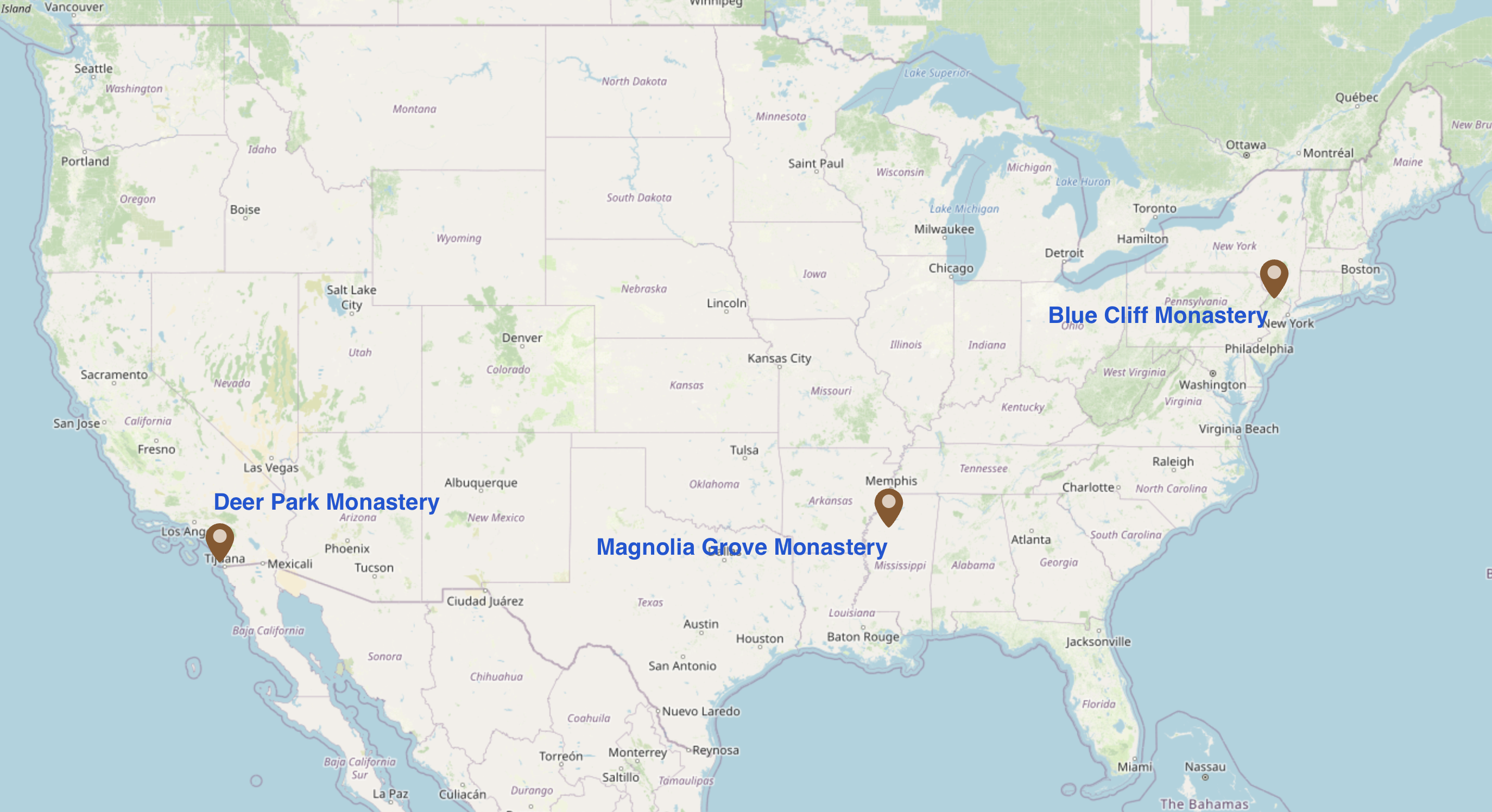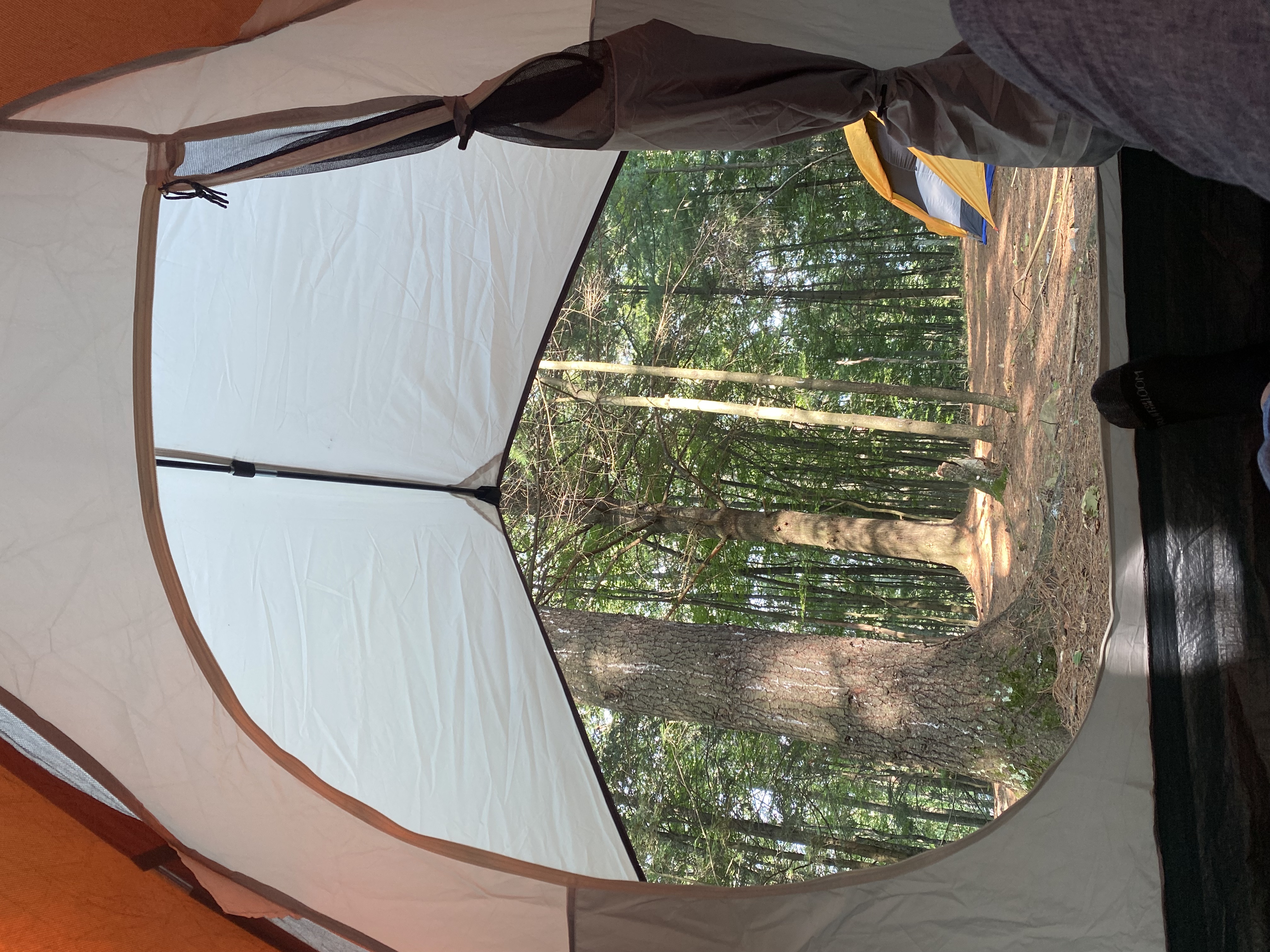Blue Cliff Monastery
I rencently went to Blue Cliff monastery to participate in a work weekend. It is a way the monastery allows the public to contribute to its common space.
Blue Cliff is one of the three Plum Village monasteries in the US. It is localted in upstate New York.

Blue Cliff monastery is the eastern most monastery among the three in the US.
the place
From Schenectady, it took me 2.5 hours going south to reach Blue Cliff. The drive went through the rural parts of upstate New York. The last 20 minutes was stunning as it goes onto a mountain area. Unfortunately, no photos because I was eagerly driving to reach the monastery so that I wouldn’t miss the dinner at 6pm.
When arrived, I met the registration officier named Hai Ly. She showed me around in detail, as if I was a newly onboarded monk. I would be working together with the monastics for a day to clean the monastery.
At one point, chi Hai Ly brought me to the dinning hall, came to its big window, and pointed out to a vast space of lawns outside. “You can camp anywhere there”, she said. I took it as “You have to figure out by yourself where is a good camping spot.” I found my way to a designated camping area for men, located within a small pine forest and set up my tent. Below is the moment I was just done setting it up.

There are two perhaps funny things about the set up of the monastery. First, it has two separate areas — one called the Brother Side, which is for the monks, the other called the Sister Side. Each side has its own dinning hall, meditation hall, and bedrooms. Second, the two areas are split by a road called Pleasant Valley Road. Third, the road that connects the two areas is called Mindfulness Road. Pleasure and mindfulness seems to be woven and contemplated here.
work
Saturday was the working day. There were around 50 volunteers coming from all over the East Coast, mostly within the New York state. At the beginning of the day, everyone was gathering in the Sisters dinning hall and singing some songs. The facilitator, Brother Dai Luc, told us that even though it is a working day, there is no rush to get everything done on that day. The goal is to do working meditation, which essentially means working while regularly noticing our thoughts and emotions during the work.
In the morning, thay Dai Luc led me and three other friends to a camp ground full of leaves and asked us to clean it up. We started by picking up big branches and throw it away, then proceeding to using the rake to move the leaves. At some point, I realize it would be much faster to move the leaves onto a tarp first, then bring the tarp to the dumping location. Therefore, I went to the Sisters to ask for one.
At the same time, the Sisters were looking for more people to do weedwacking. I saw that task during the assignment session earlier, but I did not know what it is. Seeing me, Sister Mac Nghiem immediately moved me to that task. They gave me a weekwacker, some cool equipments, and a 5-minute tutorial on how to weekwack. I had a rough start to control the height of the blade. If it is too high, it won’t cut the grass. If it is too low, beside cutting the grass, it will also stir up the earth and rocks, which pollutes the air and shoots rocks into my feet. But somehow, I managed to cut the grass anyway. At the second shift, an elder friend joined to help me. He is a timid Vietnamese software engineer, working in AI for healthcare somehwere on the East coast.
For the whole day, the loudest sounds at the monastery was of the weedwackers and mowers. I thought about it a few times — “How do I feel when a monastery is full of machinery sounds?” A monastery was supposed to be quiet and peaceful. So this shows that a monastery is not a fantasy heaven where things are magically done by themselves. It needs maintenance like any other places. And when that is needed, there is no shame in making mindful use of technologies to get things done.